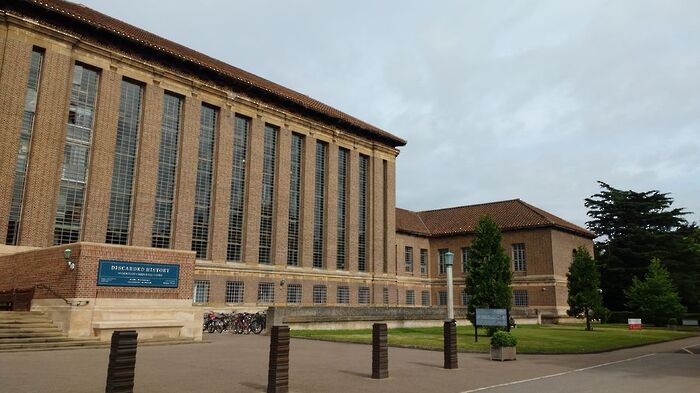Leafing through our libraries
Delving into Cambridge’s libraries, Investigations Editor Jack Conway uncovered some of the collections’ greatest treasures
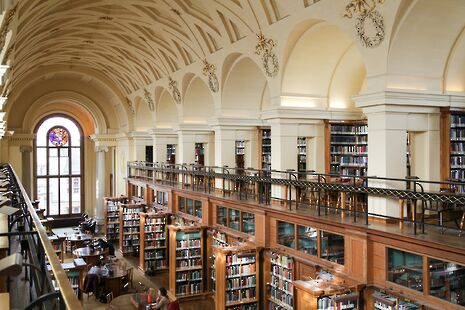
It’s safe to say that most Cambridge students know a thing or two about libraries. They are (supposed to be) our first stop after receiving a reading list and our last stop after a night of studying. We spend hours roaming their stacks and even more hours hunched over in their study spaces.
But these spaces, often associated with hard work and late nights, are much more than just places to study. The libraries of Cambridge safeguard ancient Greek papyri, expertly crafted manuscripts, handwritten letters from great historical figures, and 2009 animated film Ice Age 3: Dawn of the Dinosaurs – in short, humanity’s greatest intellectual triumphs.
So to celebrate the library, and to look at a side of them that students don’t usually see, Varsity dove into all things libraries. What follows is what we found.
So. Many. Libraries.
Each of the University’s 31 constituent colleges has a library, and some divide their collections into two libraries – one to cover everyday student needs and a second for old and rare books. There are 33 department and faculty libraries, including three at the Fitzwilliam Museum, one at the botanic gardens, and the Cambridge University Collection of Aerial Photography (CUCAP), which told Varsity they are currently closed, but hold almost 500,000 images that are “the result of airborne survey campaigns undertaken by Cambridge University”, from 1943-2009”.
There are an additional 23 ‘affiliated’ libraries, including the flagship University Library. Finally, there are another 18 libraries associated with the university, including the Cambridge Union’s library, and the Cambridge Arctic Shelf Programme library.
In total, that’s 105 libraries – more if college libraries are counted separately.
The largest college library is Trinity’s, whose collection numbers around 300,000 volumes. Other big college libraries are St John’s, with around 150,000, and King’s with around 130,000.
But unsurprisingly, the University Library is the largest of them all. Along with the British Library and Oxford’s Bodleian Library, it is one of England’s three legal deposit libraries. This means it “is entitled to claim a copy of every publication in printed form published in the UK and Ireland.”
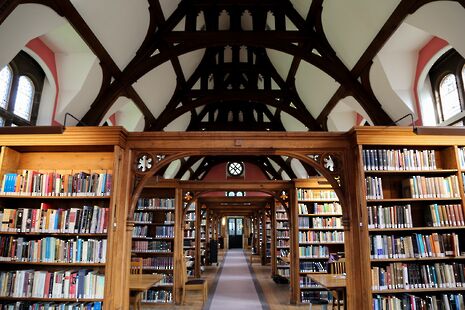
Beyond books
Though libraries are best known for their endless rows of books, most have other types of media as well – and some don’t even have a single book at all! Many college libraries loan magazines and DVDs. Besides Ice Age 3, Churchill has copies of Legally Blonde, Bridget Jones’s Diary, and The Devil Wears Prada among the 353 classics in its collection.
The Language Centre Library also has video media – specifically a World Film collection and television in 12 languages – in order to aid in language learning by providing material to practice listening to native speakers.
Libraries may also contain pamphlets, microforms, letters, photographs, maps, and other media.
“There’s Newnham, whose college library has a cast copy of renowned mathematician Blaise Pascal’s death mask...which is definitely not a book.”
When it comes to letters, Christ’s College benefits from its most famous alumnus: Charles Darwin. The college library holds around 150 letters from Darwin to his cousin. An avid insect collector, Darwin included illustrations of insects in some of the letters.
As its name suggests, CUCAP’s collection is composed entirely of aerial photographs – 500,000 “vertical and oblique” images, to be precise. The Pendlebury Library of Music has thousands of scores and around 10,000 sound recordings.
The Fitzwilliam Museum’s Department of Coins and Metals contains an extensive collection of coins from different regions and time periods. One of its exhibitions includes the propaganda coins of British revolutionary Thomas Spence, and another “explores the impact that Western concepts of money have had upon Asia”.
Finally, there’s Newnham, whose college library has a cast copy of renowned mathematician Blaise Pascal’s death mask...which is definitely not a book.
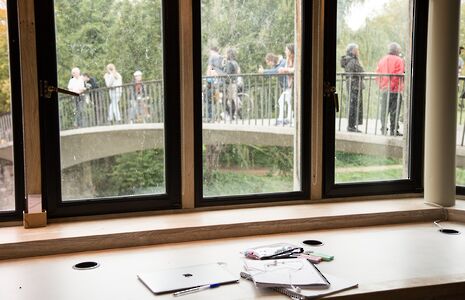
Did you know they have books?
Besides some very cool, non-book artifacts, many of the actual books that Cambridge’s libraries house are far more interesting than the ones that appear on reading lists. For one, they are much older. Corpus Christi’s rare books library, called the Parker Library, has a sixth century codex of the Gospels of St Augustine. The book, gifted to the college by the Archbishop of Canterbury in 1575, is the oldest surviving illustrated gospel book written in Latin.
St John’s has papyri dating from the third century BCE and manuscripts dating from the tenth century. The college’s oldest printed book is a copy of Cicero’s De Officiis – it was printed in 1466 in Mainz, the same city where Gutenberg invented the printing press less than 30 years earlier.
But even St John’s can’t beat the University Library, which has one of the only 21 surviving complete Gutenberg Bibles. Printed by Gutenberg himself in the 1450s, these books are among the most valuable in the world.
The Physiology Development and Neuroscience Library proves a contender for interesting and old books. They told Varsity that they have copies of several books by Galen, a Greek physician who lived during Roman times, “dating back to 1550”. They also have a 1649 copy of Harvey’s De Circulatione Saguinis, a landmark work that introduced the concept of the circulatory system. They hope the latter will eventually be moved to the UL.
Slightly less old but undoubtedly still impressive is Selby’s Illustrations of British Ornithology, held by the Selwyn college library. Published in 1821, it is 27” x 21.5” and contains life-sized illustrations of birds found in Britain.
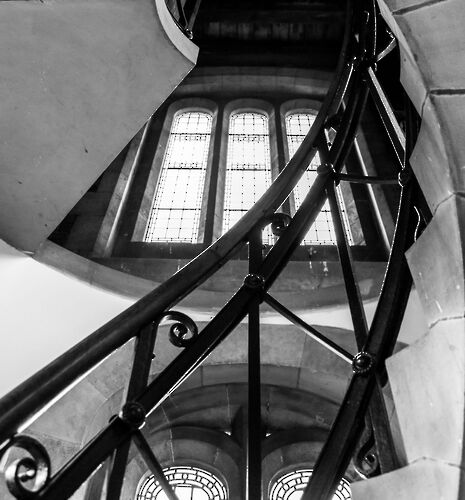
The most popular books are science textbooks
While college libraries’ most closely guarded treasures are notable for their rarity, equally notable are the books that students can’t seem to get enough of. To find out which books were most popular, we asked librarians for their most checked-out books for the year 2017-2018.
Molecular Biology of the Cell by Alberts et al. was the clear winner. A popular introductory textbook, it topped the popularity contest at a number of colleges and was checked out 108 times at Christ’s College alone.
Another textbook, Keeler & Wothers’ Chemical Structure and Reactivity: an Integrated Approach, also came up more than once, suggesting that science students read more than arts students give them credit for. Other popular books were Gray’s Anatomy for Students and Intermediate Economics.
At the Classics Library, the most popular book was Old Oligarch: Pseudo-Xenophon’s Constitution of the Athenians. This book, the earliest surviving Athenian prose, was written in 420 BCE and offers a reluctant defense of Athenian democracy from its oligarchic critics.
Dog people may be reluctant to visit Sidney Sussex after finding out its most popular book. Checked out 32 times over the course of the last year, it is the Guide to the Dissection of the Dog.
 News / Downing investigates ‘mysterious’ underground burial vault 29 December 2025
News / Downing investigates ‘mysterious’ underground burial vault 29 December 2025 News / Unions protest handling of redundancies at Epidemiology Unit30 December 2025
News / Unions protest handling of redundancies at Epidemiology Unit30 December 2025 Lifestyle / Ask Auntie Alice29 December 2025
Lifestyle / Ask Auntie Alice29 December 2025 Interviews / You don’t need to peak at Cambridge, says Robin Harding31 December 2025
Interviews / You don’t need to peak at Cambridge, says Robin Harding31 December 2025 Features / ‘Treated like we’re incompetent’: ents officers on college micromanagement30 December 2025
Features / ‘Treated like we’re incompetent’: ents officers on college micromanagement30 December 2025

